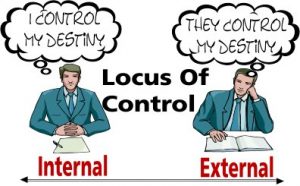The Power of Now for Entrepreneurs and Startups: How the Present Drives Your Business and Your Life
/0 Comentarios/en Superacion/por JORGE MONTES DE OCAIntroduction
In the business world, especially within the fast-paced startup ecosystem, speed and pressure are the norm. Founders are constantly projecting themselves into the future: the next product launch, the next funding round, the next strategic client. At the same time, many carry the weight of the past: a failed pitch, a rushed decision, or a partnership that didn’t work out.
This constant oscillation between what has already happened and what has not yet arrived often leaves little room for the most important dimension of all: the present.
The present is where real decisions take place, where action happens, and where ideas materialize. For that reason, applying the philosophy of The Power of Now by Eckhart Tolle is not only a path toward personal well-being but also a strategic tool for entrepreneurs and startups aiming to build sustainable and innovative businesses.
This article explores how living in the now can positively impact entrepreneurship, offering practical guidance to help founders reduce mental noise, strengthen decision-making, and lead their ventures with greater clarity.
The Entrepreneurial Mind: Friend and Foe
The first obstacle to the present is the mind itself. For entrepreneurs, the mind works like a relentless machine of ideas, scenarios, and possibilities. This is useful in the creative phase, but it becomes a burden when excessive thinking leads to anxiety, distraction, and burnout.
An entrepreneur might be sitting in a team meeting but mentally worrying about next week’s investor presentation. Or while working on the business model, they relive past failures and freeze in fear of repeating them. This noise prevents them from noticing the opportunities right in front of them.
Adopting the Power of Now means realizing that you are not your mind and learning to observe your thoughts instead of being consumed by them. This separation allows something critical for business: strategic clarity.
The Duality of the Entrepreneur: The Public “Self” vs. the Real “Self”
Every founder manages two sides: the one they show to the world—confident, optimistic, visionary—and the one they live privately—tired, insecure, full of doubts. Recognizing this duality is essential because many business decisions are made to protect the external image rather than serve the company’s actual needs.
For example, clinging to a product that doesn’t work just to preserve pride is a trap of the ego. By contrast, a founder who connects with their authentic self can acknowledge mistakes, pivot when necessary, and redirect resources to what truly creates value. This internal honesty translates into authentic leadership and stronger trust from others.
The Present as an Antidote to Startup Chaos
Uncertainty is the rule in the startup ecosystem. There are no guaranteed results, which creates a constant mental storm: Will funding be enough? Will a competitor move faster? What if scaling fails?
Practicing presence means letting go of hypothetical future scenarios and focusing on what can be solved today. If you are in a client meeting, the best thing you can do is truly listen in that moment—not drift into what objections they might raise later.
This mindset reduces stress and improves productivity because energy is focused on actionable steps today rather than dissipated into endless “what ifs.”
Emotions and Business: Detaching from Fear and Anxiety
Entrepreneurs face intense emotions: excitement, frustration, fear, hope. When these emotions dominate decision-making, mistakes multiply.
For instance, fear of losing a deal can push a founder to accept unfair terms. Anxiety about being “the first” can lead to launching prematurely.
Practicing presence allows you to notice emotions without letting them control your actions. If an investor rejects your pitch, instead of drowning in frustration, you can analyze what you learned and apply it to the next opportunity.
Fear and Ego on the Entrepreneurial Journey
The most common fear in entrepreneurship is not financial failure—it is the blow to the ego: being perceived as someone who didn’t make it.
When you understand that the ego is not your true self but a mental construct, failures stop being personal attacks and become valuable lessons. The present reminds you that every mistake only happens in a specific moment and does not define your entire trajectory.
Learning from the Past Without Living in It
Entrepreneurs often say things like “I tried that, and it didn’t work” or “I failed with something similar before.” The danger is allowing the past to dictate today’s choices.
The past offers lessons and perspective, but the present is the only place where execution happens. Every iteration, test, and meeting is a fresh opportunity, not a replay of past failures.
Conscious Decision-Making and Accountability
The Power of Now emphasizes that every problem leaves you with two choices: accept it or resolve it. What is useless is resisting it mentally and turning it into drama.
If a co-founder consistently underperforms, you can either accept it (and adapt) or address it directly through clear conversations, new agreements, or even separation. Pretending the problem doesn’t exist only drains energy.
Conscious decisions do not guarantee perfect outcomes, but they provide peace of mind because they are aligned with present realities rather than imagined futures.
Relationships and Teams: Love, Pressure, and the Present
Startups are not just ventures; they are networks of relationships. Founders, co-founders, employees, investors, and clients create an emotional web. Excessive attachment or unrealistic expectations often damage those bonds.
Living in the present helps you value what exists now without pressuring others to meet future projections. A co-founder may not be “perfect” in every aspect, but they can still be appreciated for what they contribute in the moment.
This approach fosters healthier, longer-lasting relationships both inside and outside the business.
Living with Purpose in Business
Many entrepreneurs confuse purpose with goals. A goal might be to raise a funding round, but purpose is the deeper reason driving your business. Living in the present means remembering that purpose in each action, instead of getting lost chasing only results.
When you work from purpose, even small tasks become part of something meaningful. And when purpose is alive in the present, your business becomes more sustainable and attractive to both clients and collaborators.
Practical Tools to Apply the Power of Now in Your Startup
- Conscious breathing: Before any important meeting, take one minute to breathe deeply and focus on the moment.
- Pause rituals: Schedule short screen-free pauses to check in with yourself and regain clarity.
- Present meetings: Instead of obsessively planning for all future scenarios, focus on what can be resolved today.
- Short meditation: Just five minutes a day can help you detach your thoughts from your identity.
- Present journal: At the end of the day, write down three moments when you were fully present and what you learned from them.
Conclusion
For entrepreneurs and startup founders, The Power of Now is more than a philosophical concept—it is a business strategy. By living in the present, you reduce the weight of the past and the anxiety of the future, make clearer decisions, lead with authenticity, and truly enjoy the entrepreneurial journey.
Success does not come only from what you will achieve tomorrow but from what you can consciously do today. That is the real power of now in business: turning every moment into a solid step toward the vision you want to create.
References
Tolle, E. (2004). The Power of Now: A Guide to Spiritual Enlightenment. Novato, CA: New World Library.
Covey, S. R. (2020). The 7 Habits of Highly Effective People. New York, NY: Free Press.
Goleman, D. (2013). Focus: The Hidden Driver of Excellence. New York, NY: HarperCollins.
Sinek, S. (2011). Start with Why: How Great Leaders Inspire Everyone to Take Action. New York, NY: Portfolio.
Brown, B. (2018). Dare to Lead: Brave Work. Tough Conversations. Whole Hearts. New York, NY: Random House.
Ready to transform your life Discover the power of the present

Marketing: Don’t Just Do What You Do Best — Do What Sets You Apart

World Mental Health Day: spotlighting serious mental illness and financing hope

























